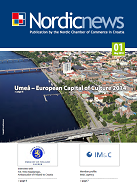A Nation on a First Name Basis – The Icelandic Naming System Explained
It is worth mentioning that if you look up a name in the phone book in Iceland you look by first name.The whole culture is on a first name basis. Students call teachers by first names, subordinates call bosses by first name, patients call the doctor by first name and so on and so forth, everything is by first name.
It is a name system that makes it harder for good ol’ European hierarchy to flourish in the country. In fact, by tradition there are no proper last names in Iceland. There are only first names, and then the person simply is the son or daughter of their father and more recently also their mother. This is the patronymic naming system and the growing matronymic naming system of Iceland. A last name referrers to immediate father or mother rather than family history although that does also exist, but almost marginally. A growing trend is to give a child a last name referring to both parents, for example the current mayor of Reykjavík is named Dagur Bergþóruson Eggertsson (Dagur son of Bergþóra son of Eggert) Dagur means Day by the way. That’s another thing worth mentioning, first names almost always have an existing meaning in the language.
The Example of Jón
Lets take an example of a humble Jón, his father’s name is Ari and his mother’s name is Anna. When Jón was born he had no name, he was simply registered by default Drengur (boy) Arason. After his birth his parents had time to decide on a name and register it. His last name could become either Arason (son of Ari) or Önnuson (son of Anna), but by default it goes to the father unless otherwise registered. Lets say they were a fairly alternative family and they decided refer to his mother when naming him so he becomes Jón Önnuson. Icelandic first names follow the grammatical rules of nouns; they change by gender and case system hence turning the daughter of Anna into Önnudóttir. Anna, his mother, however is also someone’s daughter, so she will have her father’s first name in her last name, lets say his name is Geir, so her full name is Anna Geirsdóttir, Anna the daughter of Geir (this become relevant later).
When Jón is blessed with a child later in his life, he stays true to his alternative family and decides for a very unusual name for his child. Then he must submit the name to Mannanafnanefnd, the Name Committee, they must review it, and until they validate it, the child is simply registered as Boy or Girl Jónsson or –daughter: Stúlka (girl) Jónssdóttir or Drengur (boy) Jónsson. Lets say Jón has a daughter, Stúlka Jónsdóttir and the name committee does not approve the unusual name her father applied for. The verdict might come after years of debate with the committee, even the name in the girl’s passport is written Stúlka Jónsdóttir. Jón finally surrenders, he is no longer venturous in his name giving and decides to name is daughter after his beloved mother, another common practice in Iceland. Her name then becomes Anna Jónsdóttir and she must reapply for a passport.
Anna the daughter of Jón, the son of Anna, the daughter of Geir etc.
When Anna Jónsdóttir turns 80 years old, hopefully after a fruitful and inspired life, she has a big anniversary and they might write about her in the birthday column in the newspapers. Older generation Icelanders read this column, it tells us about her life, to whom she married, who are her children etc. And we can read her name generations back. Anna Jónsdóttir, Önnuson, Geirsdóttir, and so on and so forth first name by first name – To complicated? Ok lets just stop at two generations.
Source: http://www.icenews.is 29 January 2016


























